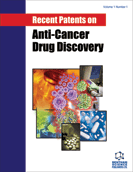Abstract
Taxol is a powerful and complex anti-cancer compound that was first isolated from the bark of the Pacific yew Taxus brevifolia. Although it offered huge potential as an anti-cancer agent, it experienced a long development period, attributed to by its low availability from its traditional source. Research into alternate sources and methods of production for Taxol have been crucial in meeting with demand for the drug. Three main avenues of research have resulted. Firstly, chemical syntheses of this complex diterpene consist of multiple steps and are not economically feasible due to their low yield. Developments have therefore concentrated on enhancing production in vivo. Efforts have been made to understand the enzymatic steps involved in the synthesis within the yew and innovations to produce Taxol and Taxol-like substances in high yield from cell cultures of Taxus species. An alternative stream of research focuses on endophytes as the producer of Taxol. Endophytes can be isolated from the yew tree and produce Taxol in culture. Encouraging findings with endophytes resulted in much interest in the prospect of using endophytes as the producer of Taxol and Taxol-like substances. This review also discusses patents and the future prospects of each of the main streams of production.
Keywords: Taxol, anti-cancer agents, endophyte, diterpene
Recent Patents on Anti-Cancer Drug Discovery
Title: Development of Taxol and Other Endophyte Produced Anti-Cancer Agents
Volume: 3 Issue: 1
Author(s): Daniel M.Y. Sze, Kristin Miller and Brett Neilan
Affiliation:
Keywords: Taxol, anti-cancer agents, endophyte, diterpene
Abstract: Taxol is a powerful and complex anti-cancer compound that was first isolated from the bark of the Pacific yew Taxus brevifolia. Although it offered huge potential as an anti-cancer agent, it experienced a long development period, attributed to by its low availability from its traditional source. Research into alternate sources and methods of production for Taxol have been crucial in meeting with demand for the drug. Three main avenues of research have resulted. Firstly, chemical syntheses of this complex diterpene consist of multiple steps and are not economically feasible due to their low yield. Developments have therefore concentrated on enhancing production in vivo. Efforts have been made to understand the enzymatic steps involved in the synthesis within the yew and innovations to produce Taxol and Taxol-like substances in high yield from cell cultures of Taxus species. An alternative stream of research focuses on endophytes as the producer of Taxol. Endophytes can be isolated from the yew tree and produce Taxol in culture. Encouraging findings with endophytes resulted in much interest in the prospect of using endophytes as the producer of Taxol and Taxol-like substances. This review also discusses patents and the future prospects of each of the main streams of production.
Export Options
About this article
Cite this article as:
Sze M.Y. Daniel, Miller Kristin and Neilan Brett, Development of Taxol and Other Endophyte Produced Anti-Cancer Agents, Recent Patents on Anti-Cancer Drug Discovery 2008; 3 (1) . https://dx.doi.org/10.2174/157489208783478685
| DOI https://dx.doi.org/10.2174/157489208783478685 |
Print ISSN 1574-8928 |
| Publisher Name Bentham Science Publisher |
Online ISSN 2212-3970 |
Related Books
 47
47
- Author Guidelines
- Bentham Author Support Services (BASS)
- Graphical Abstracts
- Fabricating and Stating False Information
- Research Misconduct
- Post Publication Discussions and Corrections
- Publishing Ethics and Rectitude
- Increase Visibility of Your Article
- Archiving Policies
- Peer Review Workflow
- Order Your Article Before Print
- Promote Your Article
- Manuscript Transfer Facility
- Editorial Policies
- Allegations from Whistleblowers
Related Articles
-
Recent Advances in Radiation Therapy of Cancer Cells: A Step towards an Experimental and Systems Biology Framework
Current Radiopharmaceuticals Stationary Wavelet Transform and AdaBoost with SVM Based Pathological Brain Detection in MRI Scanning
CNS & Neurological Disorders - Drug Targets Clinical Studies with Targeted Toxins in Malignant Glioma
Reviews on Recent Clinical Trials Recent Developments of Platinum-based Anticancer Drugs- Detection and Analysis in Biological Samples
Current Organic Chemistry 1,2,4-Triazine Chemistry Part III: Synthetic Strategies to Functionalized Bridgehead Nitrogen Heteroannulated 1,2,4-Triazine Systems and their Regiospecific and Pharmacological Properties
Current Organic Synthesis A Review of Fish Lectins
Current Protein & Peptide Science Anti-angiogenic Treatment in Metastatic Colorectal Cancer: Current Issues and Future Aims
Current Cancer Therapy Reviews Epigenetic MicroRNA Regulation of Multiple Chromatin Functions: A Perspective in Cancer
Epigenetic Diagnosis & Therapy (Discontinued) Signal Transduction in HIV Protein-Treated Astrocytes
Current Signal Transduction Therapy Liposome-Nanogel Structures for Future Pharmaceutical Applications
Current Pharmaceutical Design Folate-Linked Lipid-Based Nanoparticle for Targeted Gene Delivery
Current Drug Delivery Separation of Ginseng Active Ingredients and their Roles in Cancer Metastasis Supplementary Therapy
Current Drug Metabolism PEGylated Liposomal Vancomycin: A Glimmer of Hope for Improving Treatment Outcomes in MRSA Pneumonia
Recent Patents on Anti-Infective Drug Discovery An Engrossing History of Azidothymidine
Immunology, Endocrine & Metabolic Agents in Medicinal Chemistry (Discontinued) Biology and Therapeutic Applications of Peroxisome Proliferator- Activated Receptors
Current Topics in Medicinal Chemistry Nanomaterials in the Pharmaceuticals: Occurrence, Behaviour and Applications
Current Pharmaceutical Design Mesenchymal Stem Cell Therapy for Equine Tendinitis
Recent Patents on Regenerative Medicine The Interactions of Anticancer Agents with Tea Catechins: Current Evidence from Preclinical Studies
Anti-Cancer Agents in Medicinal Chemistry Synthesis of Phenol-derivatives and Biological Screening for Anticancer Activity
Anti-Cancer Agents in Medicinal Chemistry p53-Independent Activities of MDM2 and Their Relevance to Cancer Therapy
Current Cancer Drug Targets


























